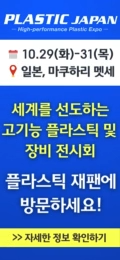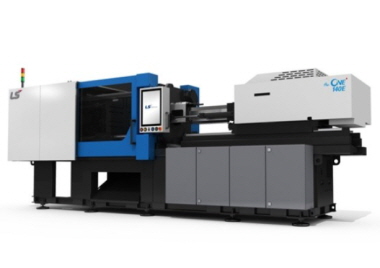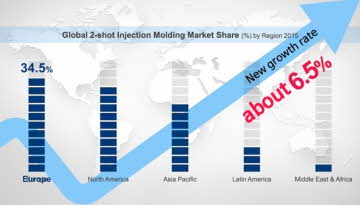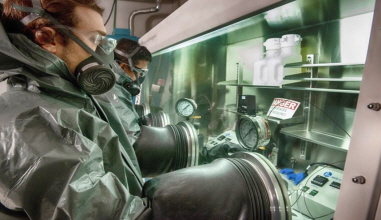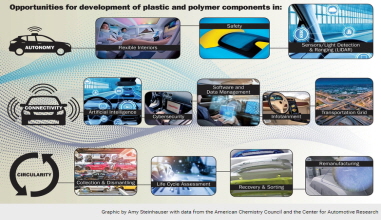Technology & solutions
Even more cost-effectiveness for lightweight construction that is ready for series production
- KraussMaffei is presenting groundbreaking solutions from the Injection Molding and Reaction Process Machinery business areas at the Composites Europe trade show
- Automation as a driver of innovation for production processes ready for large series production
- New iPul pultrusion system provides for a doubling of production speed
- Intelligent automation concept saves cycle time during the FiberForm process
Sophisticated machine and mold technology, production processes ready for large series production and groundbreaking lightweight construction: From September 19 - 21 at the Composites Europe Show (Hall 4, booth D 21) in Stuttgart, KraussMaffei is presenting solutions for manufacturing fiber-reinforced plastic components (FRP). Thanks to the wide-ranging expertise in the areas of injection molding and reaction process machinery, KraussMaffei is one of the few providers on the market to provide technologies and systems for processing thermoset and thermoplastic matrix systems from a single source.
![]()
▲ More speed in pultrusion: The new iPul system was constantly surrounded at the KraussMaffei Competence Day Pultrusion
Automation drives innovation
"The market for composites continues to develop very dynamically. Important drivers of innovation are automated processes that allow manufacturing that is ready for large series production. In light of this fact, we are continually optimizing our systems and processes while expanding our portfolio," says Erich Fries, Head of the Composites/Surfaces business unit with KraussMaffei. The most recent example is the new iPul pultrusion system, the first complete system for continuous pultrusion of straight and curved profiles. Featuring production speeds up to two times faster than the conventional tub or pull-through process, it opens up completely new markets for pultrusion.
In pultrusion, continuous fibers—usually of glass, carbon or aramide—are infiltrated with a reactive plastic matrix and formed to the desired profile in a heated mold. Grippers pull the cured profile continuously and feed it to a sawing unit. The new iPul system by KraussMaffei encompasses this entire sequence and revolutionizes the technology, which has been common for a long time, in two respects. It encapsulates the infiltration of the fibers, which so far mostly takes place in open vessels, in an injection box, which permits the use of fast-reacting systems (epoxy, polyurethane, polyamide 6). And it increases the production speed from the usual 0.5 to 1.5 meters per minute to approximately 3 meters per minute. The new iPul system had its successful live debut during the KraussMaffei Competence Day Pultrusion end of June.
Five different RTM processes
Short cycle times, high reproducibility and a high degree of automation distinguish the five different RTM processes (resin transfer molding) from KraussMaffei. The HP-RTM (high pressure RTM) process (high pressure RTM) allows the manufacture of extremely light structural components, that also withstand requirements such as the load conditions that exist in a car crash. In the C-RTM process (compression RTM), the addition of resin—usually epoxy resin or polyurethane (PUR)—is carried out in a slightly open mold. Fiber content of significantly over 50% is possible in both processes. Surface RTM additionally yields a paintable surface flow-coated with polyurethane off-mold. In comparison to the process already mentioned, wet molding (also known as wet pressing) distinguishes itself through a simplified process chain—the preform process is completely omitted – and offers a cost-effective alternative for manufacturing new lightweight components, especially in vehicle manufacturing. With the T-RTM process, KraussMaffei is going one step further: for the first time, processing thermoplastic matrix systems (caprolactam) is possible. Advantage: The components are recyclable at the end of the product life cycle and, unlike common thermoset plastics, can also be formed or welded in downstream process steps.
▲ Fit for series production: KraussMaffei has further perfected its FiberForm process
Photos : KraussMaffei
Thermoplastic lightweight construction is up and coming
The FiberForm process also deals with processing thermoplastic matrix systems. FiberForm is the thermoforming and over-molding of organic sheets, platen-shaped semifinished products with continuous fibers made of glass, carbon or aramide that, for example, are embedded into a thermoplastic matrix made out of polyamide (PA) or polypropylene (PP). In this process, these semifinished products are first heated, reshaped in the injection mold and then back-injected with polymer, with or without fiber reinforcement.
"Since the market launch at the K 2010, we have consistently further developed the FiberForm technology, and today we offer our customers a series production solution," explains Stefan Fenske, FiberForm Technology Manager with KraussMaffei. New for the KraussMaffei FiberForm system is, for example, the concept of automation. The heating of the composite sheet and the demolding of the finished component take place in parallel, and the individual process steps are thus decoupled from one another. In addition, the infrared heating station required for heating up has been mounted directly above the mold parting line and—as a result—the transfer time of the composite sheet into the injection mold is reduced to a minimum. Overall, the FiberForm system provides its users with extremely robust processes, high availability and the efficiency required for high-volume series projects.


